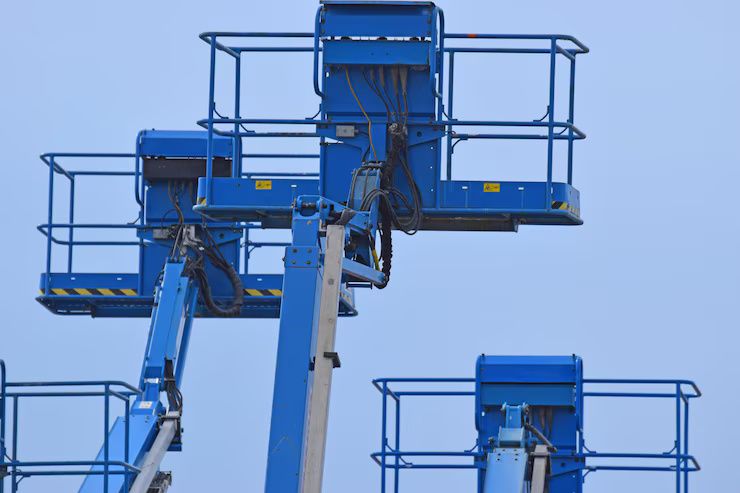Hydraulic lifts are mechanical devices powered by hydraulic pressure, used to raise or lower heavy objects. These systems use fluid power to perform lifting operations with precision and stability. They are commonly found in warehouses, factories, automotive repair shops, construction sites, and even residential settings.
The concept relies on Pascal’s Law, where fluid pressure is transferred through the system, enabling small inputs to move heavy loads. Hydraulic lifts serve a wide range of functions, from elevating vehicles for servicing to transporting goods between building floors.

Importance – Who needs hydraulic lifts and why it matters
Hydraulic lifts play a critical role in many industries by improving productivity, enhancing safety, and optimizing vertical space. Their importance today is tied to:
-
Industrial logistics: Factories and warehouses rely on hydraulic lifts for loading, stacking, and storage.
-
Automotive service: Car lifts in garages allow for vehicle inspection and repair.
-
Construction: Lifts help in elevating materials or equipment to higher floors.
-
Accessibility: Residential lifts provide easier mobility for elderly or differently-abled individuals.
-
Efficiency and safety: Manual handling of heavy items is significantly reduced, minimizing workplace injuries.
They help solve common challenges in vertical transportation, space constraints, and safe material handling.
Recent Updates – What’s new in hydraulic lift technology (2024–2025)
Hydraulic lift technology has advanced significantly in the past year:
-
Smart lift systems: Integration with IoT sensors allows real-time monitoring of weight, maintenance needs, and usage patterns.
-
Eco-friendly hydraulic fluids: Biodegradable oils are being adopted to reduce environmental impact.
-
Energy-efficient pumps: Modern hydraulic lifts use variable displacement pumps to optimize energy use.
-
Customization for home lifts: Compact residential lifts with lower power consumption and better aesthetics are now available.
-
Safety enhancements: Improved anti-drop mechanisms and automatic shutoffs in case of system failure have been introduced.
These upgrades reflect growing demand for safer, more sustainable lifting systems across both commercial and residential sectors.
Laws or Policies – Safety regulations and compliance
Hydraulic lifts are subject to various national and international standards for installation, operation, and maintenance. In India and globally, key regulations include:
-
The Lift and Escalator Act (State-wise in India): Governs the safety, licensing, and inspection of lifts.
-
ISO 9386-1 & 2: Safety regulations for platform lifts and stairlifts for persons with impaired mobility.
-
ASME B20.1 (US): Covers safety standards for conveyors and related equipment including vertical lifts.
-
OSHA Guidelines (Workplace safety – US): Ensures safe installation and use in industrial environments.
-
Building codes: Local codes often define where and how lifts may be installed, especially in multi-story buildings.
Compliance ensures operator safety, limits liability, and meets building and workplace standards.
Tools and Resources – Useful aids for selection and maintenance
Here are practical tools and resources to help with choosing or maintaining a hydraulic lift:
-
Lift calculator tools: Estimate required lift capacity, height, and platform size (e.g., Lift Table Calculator by Bishamon).
-
Mobile apps: Apps like “Lift Inspection Checklist” help manage safety checks.
-
IS codes (India): Refer to IS 14665 and other standards for elevators and hydraulic systems.
-
Supplier comparison sites: Platforms like IndiaMART or Alibaba let you compare specifications.
-
YouTube tutorials: Educational channels explain maintenance, oil changes, and safety tips.
-
Manufacturer support tools: OEMs offer downloadable manuals and troubleshooting guides.
Using the right tools ensures operational reliability, safety, and cost-effectiveness.
FAQs – Common questions about hydraulic lifts
Q1. What are the main types of hydraulic lifts?
There are several types, including scissor lifts, car lifts, goods lifts, boom lifts, and passenger lifts. Each serves different load capacities and height requirements.
Q2. What’s the difference between hydraulic and electric lifts?
Hydraulic lifts use fluid pressure, ideal for heavy lifting with smooth motion. Electric lifts use motors and gears and are more common in passenger elevators and low-weight applications.
Q3. Are hydraulic lifts safe?
Yes, modern hydraulic lifts include safety valves, overload protection, and emergency shut-off features. Regular inspections and proper installation are key to safety.
Q4. Can hydraulic lifts be installed in homes?
Yes, residential hydraulic lifts are becoming more common. They require less space and infrastructure than conventional elevators.
Q5. How often should hydraulic lifts be maintained?
Typically every 3–6 months, depending on usage. Maintenance includes fluid checks, hose inspections, and system performance testing.
Final thoughts
Hydraulic lifts are a critical component of modern industrial, commercial, and even residential infrastructure. As technology evolves, these machines are becoming safer, smarter, and more energy-efficient. Understanding the types and uses of hydraulic lifts helps businesses and homeowners make informed decisions about vertical mobility solutions. Always consult certified professionals and follow safety guidelines for installation and maintenance.
